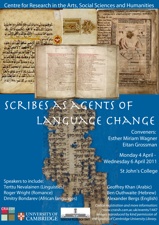| Abstract: |
Personal letters are a valuable source of authentic language use for language historians. For the purposes of historical sociolinguistic studies, perhaps the single most important characteristic of a personal letter is that it is holograph, that is, written entirely by the person in whose name it appears. This is frequently, but not always, the case with private letters written in English in databases such as the Corpus of Early English Correspondence from the 15th century onwards. In official correspondence the sender’s seal and signature played a central role in the authentication of a letter, with royal missives as a case in point.
As the quantity of the material is often at issue in the empirical study of language history, royal letters can serve as an important source of primary evidence for language historians. One reason for the high survival rate of royal letters is that they consist of important government business. In the Middle Ages a special bureaucracy had been set up in England for the running of it, with a central role assigned to the clerks of the Chancery. However, from the late medieval period onwards, holograph letters written by the royalty in English have also been preserved for posterity. They provide valuable material for assessing the linguistic repertoire of the royalty as individuals rather than as part of the administrative organisation of their time.
This paper discusses the range of linguistic variation in royal letters, both holograph and secretarial, in the Tudor period. I will contrast the holograph letters of Henry VIII with those written by his secretaries, analyze them from the viewpoint of ongoing language change and then move on to consider the role of the King’s secretaries and administrators as agents of language change, contrasting them with their contemporaries in other walks of life. My material comes from the Corpus of Early English Correspondence, which incorporates the King’s correspondence ranging from his love letters to Anne Boleyn and more official holographs written in the 1520s and 30s to secretarial letters under the sign manual from 1517 to 1542. My results indicate that individuals vary in the degree to which they participate in ongoing linguistic changes. The monarch and his secretaries display partly similar, partly divergent profiles of linguistic variation. Overall, upwardly mobile administrators are however less likely to display innovative linguistic behaviour than their contemporaries, including the royalty in whose service they were. |


